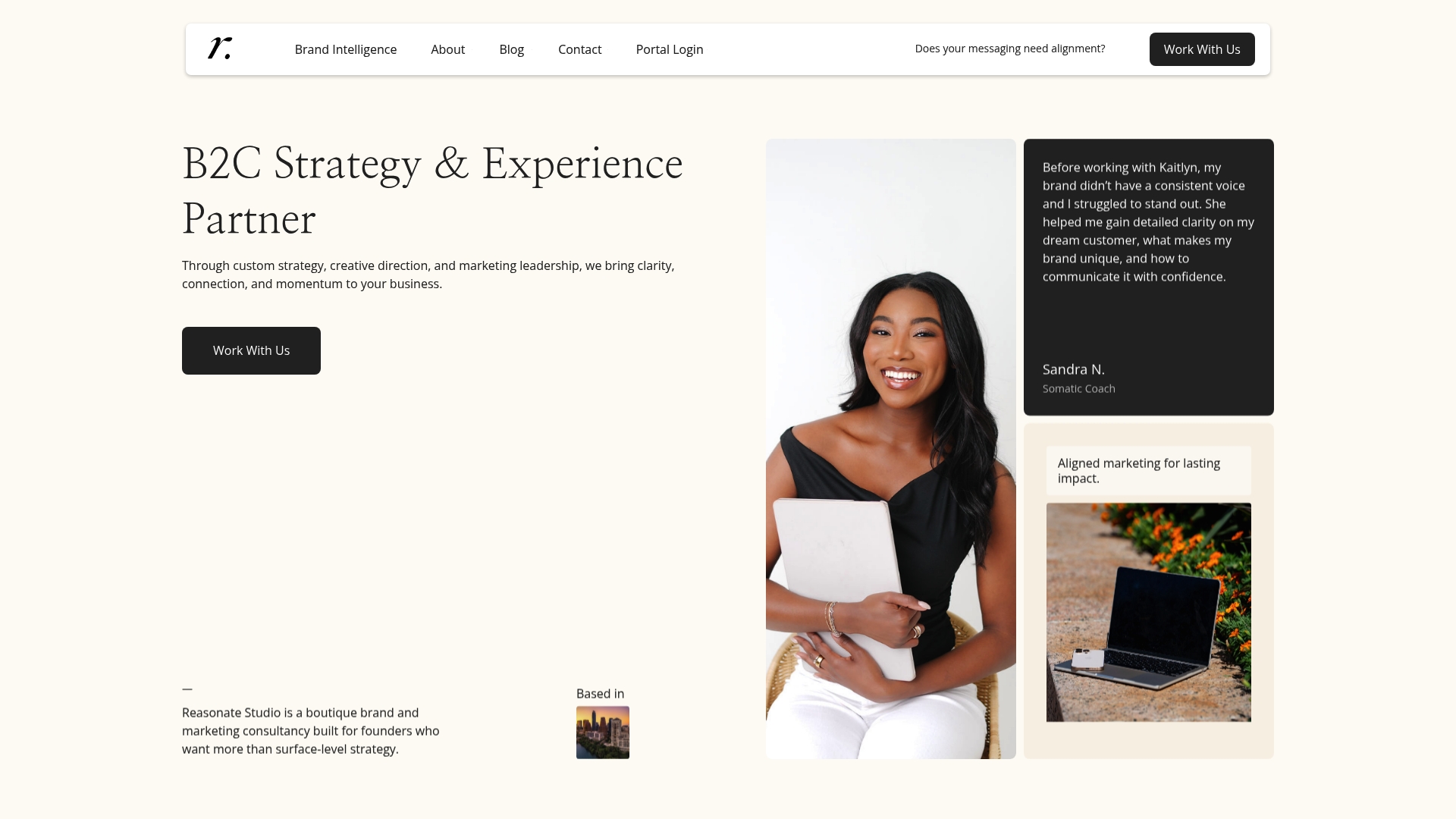Branding Strategies: Building Impactful Small Businesses

Discover why branding matters for small businesses—learn core principles, long-term benefits, common pitfalls, and how to build authority and trust.

Did you know that over 75 percent of consumers say a brand’s values influence their buying decisions? Branding does much more than put a name or a face on your business. It shapes how people remember you, trust you, and choose you over countless competitors. Learning how branding really works can turn every customer interaction into a lasting connection, giving your business a clear edge in a crowded market.
Branding isn’t just a logo or catchy tagline. It’s the foundational storytelling mechanism that transforms your business from a transaction into a meaningful connection with your audience. Branding represents the comprehensive experience people have with your business - from visual design to emotional resonance.
At its core, branding is about differentiation and promise. Just as the research from Open University defines it, a brand identifies your unique offering, creating a distinct signal in a noisy marketplace. It’s the combination of name, design, symbol, and overall experience that sets you apart from competitors. Think of it like your business’s personality - the consistent, recognizable essence that makes you memorable.
Your brand purpose goes deeper than profit. According to Wharton research, it’s about establishing a central aim that transcends mere financial goals. Successful brands create engagement by connecting with something larger than themselves. This might mean:
The most powerful brands don’t just sell products. They tell stories, create communities, and represent values that resonate with their ideal customers. Your brand becomes a promise - a commitment to consistently deliver value, quality, and a specific type of experience that your audience can trust and anticipate.
Building an authentic brand requires understanding yourself, your audience, and the unique value you bring. Brand strategy guide can help you navigate this complex but rewarding journey of defining what makes your business truly special.
Understanding the difference between brand identity and brand image is crucial for entrepreneurs who want to create a powerful, cohesive brand strategy. While these terms might sound similar, they represent two distinct aspects of your brand’s communication and perception.
Brand identity is the intentional, proactive story you craft about your business. According to research from the University at Buffalo, it encompasses your organization’s promise, essence, personality, and core messages. Think of brand identity as the script you write for your brand - the deliberate narrative you want to communicate to your audience. It includes visual elements like logos, color palettes, typography, and the consistent messaging that represents your company’s values and mission.
In contrast, brand image is the audience’s actual perception of your brand. As Open University research highlights, this is how consumers interpret and understand your brand based on their experiences and interactions. Brand image can be quite different from your intended brand identity. Imagine crafting a brand identity that portrays your business as innovative and cutting-edge, but customers perceive you as traditional or outdated. This gap between intention and perception is why strategic brand management is so critical.

Here’s a comparison of brand identity and brand image:
| Aspect | Brand Identity | Brand Image |
|---|---|---|
| Definition | Proactive story crafted by the business | Audience’s perception and interpretation |
| Control | Fully controlled by organization | Formed and influenced by audience |
| Components | Name Logo Color palette Messaging |
Customer experiences Reputation Reviews |
| Main Focus | How you want to be seen | How you are actually seen |
| Goal | Communicate values and mission | Build trust and loyalty |
To bridge the gap between brand identity and brand image, consider these key strategies:
Successful brands understand that brand identity and brand image are in constant dialogue.
INFOGRAPHIC:infographic_content] Your goal is to minimize the disconnect between what you intend to communicate and how you are actually perceived. [Brand strategy guide can provide deeper insights into creating a cohesive and compelling brand narrative that resonates with your target audience.
Branding isn’t just a marketing expense - it’s a strategic investment that directly drives business growth. Far beyond simple visual aesthetics, a well-crafted brand serves as a powerful engine that accelerates your business’s success, creating tangible economic value and competitive advantage.
According to OpenStax research, a strong brand delivers multiple growth mechanisms. It fundamentally differentiates your offerings in a crowded marketplace, builds deep customer loyalty, and enables premium pricing strategies. Imagine having customers who don’t just buy your product, but actively choose your brand over competitors, even if it costs more. That’s the transformative power of strategic branding.
Trust sits at the heart of brand-driven growth. Wharton research emphasizes that defining a clear brand purpose builds profound consumer trust, which translates into increased customer engagement and long-term loyalty. This isn’t theoretical - it’s a practical growth strategy. Brands that communicate a genuine, meaningful purpose create emotional connections that go far beyond transactional relationships.
Your brand’s growth potential manifests through several key channels:
Successful entrepreneurs understand that branding is not a one-time project, but an ongoing process of alignment between your business’s core values and your audience’s expectations. Brand strategy guide can help you transform your brand from a cost center into a genuine growth accelerator.
Client trust isn’t something you can purchase - it’s meticulously built through consistent, authentic brand experiences that demonstrate your commitment beyond mere transactions. Every interaction becomes an opportunity to either strengthen or erode the relationship you’ve worked hard to cultivate.
Wharton research reveals that a well-defined brand purpose creates profound consumer trust by aligning your brand’s values with those of your customers. This isn’t about crafting a generic mission statement, but genuinely embodying principles that resonate deeply with your target audience. When customers perceive that your brand stands for something meaningful, they’re more likely to form an emotional connection that transcends typical buyer-seller dynamics.
Consistent and authentic messaging sits at the core of building long-term loyalty. As research from the University at Buffalo highlights, brands that maintain unwavering integrity in their communication create powerful trust signals. This means your visual identity, tone of voice, customer service, and product quality must tell a unified story. Customers are remarkably perceptive - they can quickly detect when a brand’s actions contradict its stated values.
Building client trust involves several strategic approaches:
Remember, trust is a currency more valuable than any single transaction. Your brand becomes a promise - a commitment to your customers that extends far beyond the immediate moment of purchase. Brand strategy guide can help you develop a comprehensive approach to building lasting client relationships that transform occasional buyers into lifelong advocates.
Building a strong brand isn’t just about creating a pretty logo or catchy slogan. Branding mistakes can silently undermine your business’s potential, creating invisible barriers that prevent you from connecting with your ideal customers and achieving your growth objectives.
According to OpenStax research, the most critical error entrepreneurs make is failing to define a clear brand purpose. Inconsistent messaging confuses consumers and dilutes your brand’s impact. Imagine sending mixed signals about who you are and what you stand for - potential customers will struggle to understand your value proposition, making it difficult to build trust and loyalty.
The University at Buffalo highlights another significant pitfall: neglecting to maintain a consistent brand identity across all platforms. Your brand should feel like the same trusted friend whether someone encounters you on social media, your website, email communications, or in person. Inconsistency creates fragmentation, which erodes consumer confidence and makes your brand feel unreliable.
Here are the most dangerous branding mistakes to avoid:
Successful branding requires intentionality, self-awareness, and a commitment to genuine communication. Brand strategy guide can help you navigate these challenges and develop a cohesive, compelling brand that truly represents your business’s essence.
The article highlights the challenge many entrepreneurs face: creating a clear, authentic brand identity that truly resonates and builds lasting client trust and loyalty. If you find your messaging scattered or feel a disconnect between how you want to be seen and how your audience actually perceives you, you are not alone. The need for consistent storytelling and a strategic approach is critical to bridge this gap and unlock the full potential of your brand.
At Reasonate Studio, we understand these exact pain points and have developed The Aligned Impact Model™ to help entrepreneurs like you build a brand with clarity, strategy, and intentional design. Our process dives deep into your brand’s foundation before moving to visibility and execution, ensuring every marketing effort supports your business goals while authentic to your values. Using a tailored blend of DIY, DWY, and DFY services, we give you control without overwhelm.

Ready to transform your brand from a confusing mix of messages into a cohesive growth engine? Visit Reasonate Studio to explore how to create a strategic and sustainable brand that attracts your ideal customers and builds loyalty over time. Start now to make your brand’s story one that inspires trust and drives business success.
Branding serves as a storytelling mechanism that transforms your business from a transaction into a meaningful connection with your audience. It helps differentiate your offerings and create a commitment to deliver value and a specific type of experience.
Branding is a strategic investment that differentiates your offerings, builds customer loyalty, and allows for premium pricing. A strong brand effectively attracts ideal customers, reduces acquisition costs, and fosters brand advocates.
Brand identity is the proactive story crafted by the business, including its visual elements and messaging. In contrast, brand image is the audience’s perception of the brand, shaped by their experiences and interactions.
Common branding mistakes include failing to define a clear brand purpose, maintaining inconsistent brand identity across platforms, and prioritizing aesthetics over authentic communication. These pitfalls can dilute your brand’s impact and erode consumer trust.